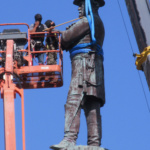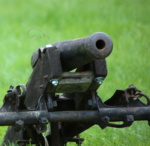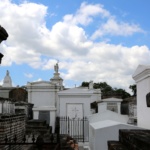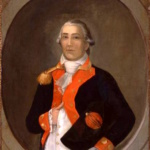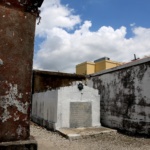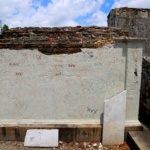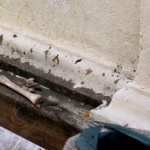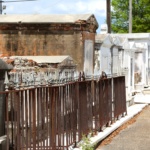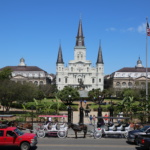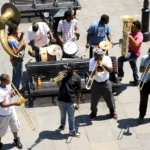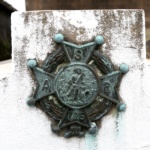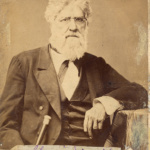New Orleans recently removed four monuments that paid homage to Confederate leaders of the Civil War. Many have applauded the mayor’s effort for finally dismantling the symbols of the inequality that continues to divide our country today. Others critiqued the move, claiming that Louisiana’s history has been erased through political grandstanding.
Although I have not lived in the city since I was a young boy, I call New Orleans home. It is where I feel the strongest sense of place and where a good portion of my family lives and have lived even before America was called the United States. New Orleans is old; haunted with the memories of my ancestors. Their roots run deep into the Mississippi and seep alongside the live oaks of the surrounding bayous.
That is all to say, that my family’s lineage did not always align on the right side of history. A short distance away from the circle where a statue of General Robert E. Lee not so long ago perched upon a massive column like a sundial, is the Confederate Memorial Hall Museum. Among the exhibits are sabres and other artifacts that my relatives used to defend their Southern way of life in the Civil War.
The past is a pang of guilt for me. Yet just like New Orleans, my family is more diverse than its Confederate ghosts. We are the gumbo that characterizes our country’s melting pot identity. At the far edge of the French Quarter on Basin Street is the Saint Louis #1 Cemetery, the oldest in the city. Known for its above ground tombs that rest on flood prone ground, the cemetery represents the spectrum of New Orleans society.
I am the descendant of Michel Dragon, who established our family’s plot in St. Louis #1 in the early 1800s. Dragon, who immigrated from Hydra, is claimed to be the first Greek of New Orleans. Dragon was an officer in the French militia when Louisiana was ceded to Spain. During the 1770s, under Governor Galvez, he fought campaigns against the British in Western Florida. For this service, he became the first soldier not of French or English decent to be inducted into the Sons of the American Revolution. Dragon rests in the same tomb as the Dimitry family, who later filled bureaucratic roles in the Confederecy, but left a legacy of educators, diplomats, writers, and heroines in New Orleans and Washington DC. They contributed to the beginnings of a collective consciousness in the 1800s that has evolved into the American experience.
The family tomb sits modestly in contrast to the grandiose sepulchres built up over the years like walls of a labyrinth. The memorials in St Louis #1 to the South’s past are what visitors from all over the world come to see. The towering bronzed visages of New Orleans’ Confederate history are often overlooked in favor of the hurricane-proof whitewashed memorials that rest on the ground, slightly below sea level. Tourists come to pay tribute to Marie Laveau, the voodoo queen, and to see where Easy Rider experimented with psychedelic filmmaking in the graveyard. They visit to hear ghost stories that give us a glance into the essence of Americana; a romantization of our shared history.
Unfortunately, St. Louis #1 has been suffocated with a love compounded by the humidity of New Orleans’ tropical environment. Vandals drunk with alchemical notions have etched rows of Xs into the sides of the graves; liquor, tobacco, and candle wax stain the pathways in tributes to the Occult; and self-appointed “tour guides” mistake pop culture for historical facts in return for generous tips.
My aunts recall visiting the Dragon/Dimitry tomb and finding a man falsely claiming that our grave was an inspiration for Anne Rice’s vampire novels. The cemetery is now closed to the public except for families and official tours to lessen the impact on the historic site.
Grave-tending requires attention. Over the years, the sun and rain have wiped clean inscriptions on tombstones and decayed memorials to dust. At St Louis #1, non-profit organizations like Save Our Cemeteries search for funding to protect the hallowed grounds from the elements.
Our own family tomb was restored in 2014 with an Indigogo campaign that my Dad started up. It was the first preservation since the last Dimitry was added to the plot. Yet, upon my visit just three years later a fern has grown out of the top of the tomb. Nature will probably erase New Orleans’ history sooner than any government decree.
I grew up in New Orleans’ Fillmore neighborhood, near the Greek Orthodox Church that is wedged between City Park and Robert Lee Boulevard. I had no idea how close I was to my ancestral roots at the time. Hurricane Katrina flooded our neighborhood after I left. My childhood home was gutted and to this day the streets are gnarled with scars from the storm.
After Katrina, New Orleans experienced a rebirth. The Saints won the Super Bowl, Lil’ Wayne made New Orleans music popular again, tourists returned to the Quarter for Mardis Gras, and for better or worse, New Orleans neighborhoods’ are gentrifying. In this new chapter of the city, the Confederate monuments have been deemed shameful and torn down.
“There is a difference between remembrance of history and reverence of it,” said New Orleans Mayor Mitch Landrieu said.
Removing the monuments will not delete historical events. Nor will their eradication remedy the deep poverty resulting from centuries of racial injustice. The statues’ absence may, however, illuminate alternative narratives. New dimensions of our history could surface that were previously overlooked in favor of the same old Southern Gothic. In this city, the past has a way of falling apart and mingling in the roux. New Orleans is the birthplace of jazz after all.
Skeletons fall out of closets. History resurfaces, but we can assign it a new meaning. Reflection allows us to better understand and take ownership of events in our present day.
I come from a family of rebels. Some wars they fought were honorable; some not so much. We learn from our mistakes. The controversy around the removal of the Confederate monuments proves that we are still learning.
I cannot escape where I come from, nor do I want to either. I am proud of New Orleans and the generations of its citizens who, through genes and traditions, make me who I am. Now that it is my turn, I will choose what memories to preserve and what lessons to keep.


